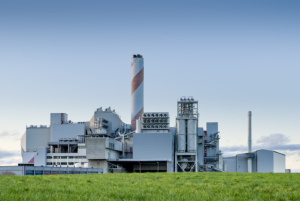What is Carbon Capture and Storage?
Carbon Capture and Storage (CCS) is the process of capturing carbon dioxide before it enters the atmosphere, transporting it, and storing it for centuries or millennia.
Carbon capture, use, and storage technologies can capture more than 90 percent of carbon dioxide emissions from power plants and industrial facilities. This captured carbon dioxide can be put to productive use in enhanced oil recovery and the manufacture of fuels and building materials, or be stored in underground geologic formations. 26 commercial-scale carbon capture projects are currently operating around the world, with 21 in early development and 13 in advanced development reaching front end engineering design.
The process of Carbon Capture and Storage involves the capture of carbon dioxide (CO2) emissions from industrial processes, such as steel and cement production, or from the burning of fossil fuels in power generation. This carbon is then transported from where it was produced, via ship or in a pipeline, and stored deep underground in geological formations.
There are three key steps to the Carbon Capture process:
- Capture: the CO2 is separated from other gases produced in industrial processes, such as those at coal and natural-gas-fired power generation plants or steel or cement factories.
- Transport: the CO2 is then compressed and transported via pipelines, road transport or ships to a site for storage.
- Storage: finally, the CO2 is injected into rock formations deep underground for permanent storage.
Why is Carbon Capture Important?
CO2 Sensors can be extremely useful in carbon capture and storage; CO2 is the most significant greenhouse gas emitted as a result human activities, with worldwide CO2 emissions predicted to exceed 33 billion tons this year [1]. It enters the atmosphere through the burning of fossil fuels, trees, solid waste and as a result of certain chemical reactions. Emissions have dramatically increased over the past five decades, and continue to increase every year.
The latest report from the United Nations Intergovernmental Panel on Climate Change (IPCC) suggests that carbon capture technology can play a significant role in achieving the goal of being carbon neutral by 2050. However, questions have arisen regarding the realistic cost and scalability of the technology.
Certain experts believe that Carbon Capture can achieve 145 of the global greenhouse gas emissions reductions needed by 2050 and that it is the only practical way to achieve complete decarbonisation in the industrial sector [2].
The World’s Largest Carbon Capture Plant in Iceland
The world’s largest plant designed to suck carbon dioxide out of the air and turn it into rock has started running in Iceland. When operating at full capacity the plant will draw 4,000 tonnes of carbon dioxide out of the air every year and inject it deep into the ground to be mineralised. This equates to the emissions from about 870 cars.
To collect the carbon dioxide, the plant uses fans to draw air into a collector, which has a filter material inside. Once the filter material is filled with CO2, the collector is closed and the temperature is raised to release the CO2 from the material, after which the highly concentrated gas can be collected. The CO2 is then mixed with water and injected it at a depth of 1,000 metres into the nearby basalt rock where it is mineralised. The CO2-water mixture turns to stone in about two years, and hydride of sulphur (HS2), within four months [3].
Edinburgh Sensors Gascard
At Edinburgh Sensors, we are proud to say that our Gascard CO2 Sensors can be used within Carbon Capture Plants, such as the one in Iceland.
Despite the fact that Carbon Dioxide is difficult to detect, Edinburgh Sensors’ range of CO2 sensors allows for Carbon Dioxide measurement via the strong absorption of non-dispersive infrared technology. As well as being failsafe and easy to use for continual monitoring, NDIR sensors offer highly sensitive detection for gases such as CO2. This is because gases such as methane and carbon dioxide absorb infrared light very strongly and have characteristic fingerprint signals for unambiguous identification so even trace amounts of gases can be detected.
Depending on the exact needs, Edinburgh Sensors offers a range of CO2 sensors including the Gascard NG, Guardian NG, the IRgaskiT, and the Gascheck. Of these, the Gascard NG offers a huge amount of flexibility in its set-up, monitoring options and integration into connected systems.
CO2 Sensors for Carbon Dioxide Sensing
Edinburgh Sensors offer highly accurate and reliable CO2 sensors. If you are looking for a carbon dioxide detector why not browse our gas sensing solutions. If you are uncertain and can’t find the right detector for your needs, simply get in touch with a member of our team. We would be delighted to assist you with a bespoke solution to meet your carbon dioxide detection requirements.
If you have enjoyed reading this article about CO2 Gas Sensing for Carbon Capture Technology, why not join Edinburgh Sensors on social media and sign up to our infrequent newsletter to be the first to know about our latest products, research and developments.

